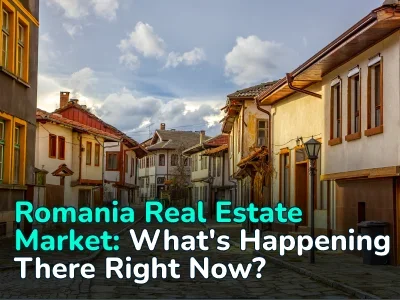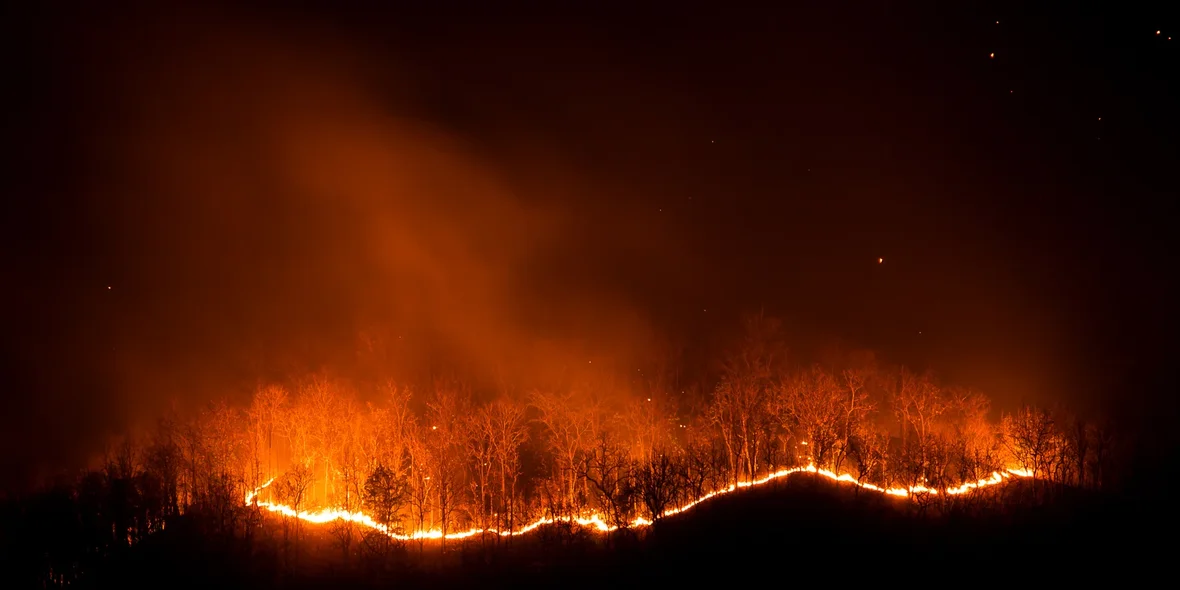
Paris Hilton's House in Los Angeles Completely Burned Down. The Five Most Destructive Wildfires in Human History. And What to Do If You Find Yourself Nearby
News about forest fires in different parts of the world appear more and more often and remind us of the destructive power of this natural element. We decided to find out which of the fires that have already happened in history have become the most destructive? In which countries and regions in general do forest fires most often occur, and why? And how should I behave if a forest is burning nearby?
But first, let's tell you what's happening right now.
Los Angeles — Fires are Destroying Entire Neighbourhoods
In Los Angeles — unprecedented fires. According to the latest data, 24 people have already died, more than 180 thousand evacuated, burned about 10 thousand buildings. The catastrophe affected the elite district of Pacific Palisades and Hollywood Hills — the capital of the American film industry and show business. World stars lost their homes: actors Anthony Hopkins, Adam Brody, singer Paris Hilton and others.
Forest fires in California began on Tuesday 7 January and became the most destructive in the history of Los Angeles. The fire has destroyed at least two thousand buildings in the city alone. The largest fire covers more than 60 square kilometres in the Pacific Palisades neighbourhood, known for its luxury real estate and Hollywood stars. Many have lost their homes or been forced to evacuate.
Among those affected are actors Adam Brody and Leighton Meester, Anna Faris, Anthony Hopkins, Paris Hilton, Billy Crystal and James Woods. Celebrities who have property in Pacific Palisades include Steven Spielberg, Tom Hanks, Adam Sandler, Jennifer Aniston, Bradley Cooper and others. Ben Affleck, Mark Hamill and Mandy Moore have evacuated from dangerous areas of California.
U.S. President Joe Biden declared disaster mode and ordered federal aid, including grants for temporary housing and home repairs. Biden postponed a visit to Italy to focus on helping victims.
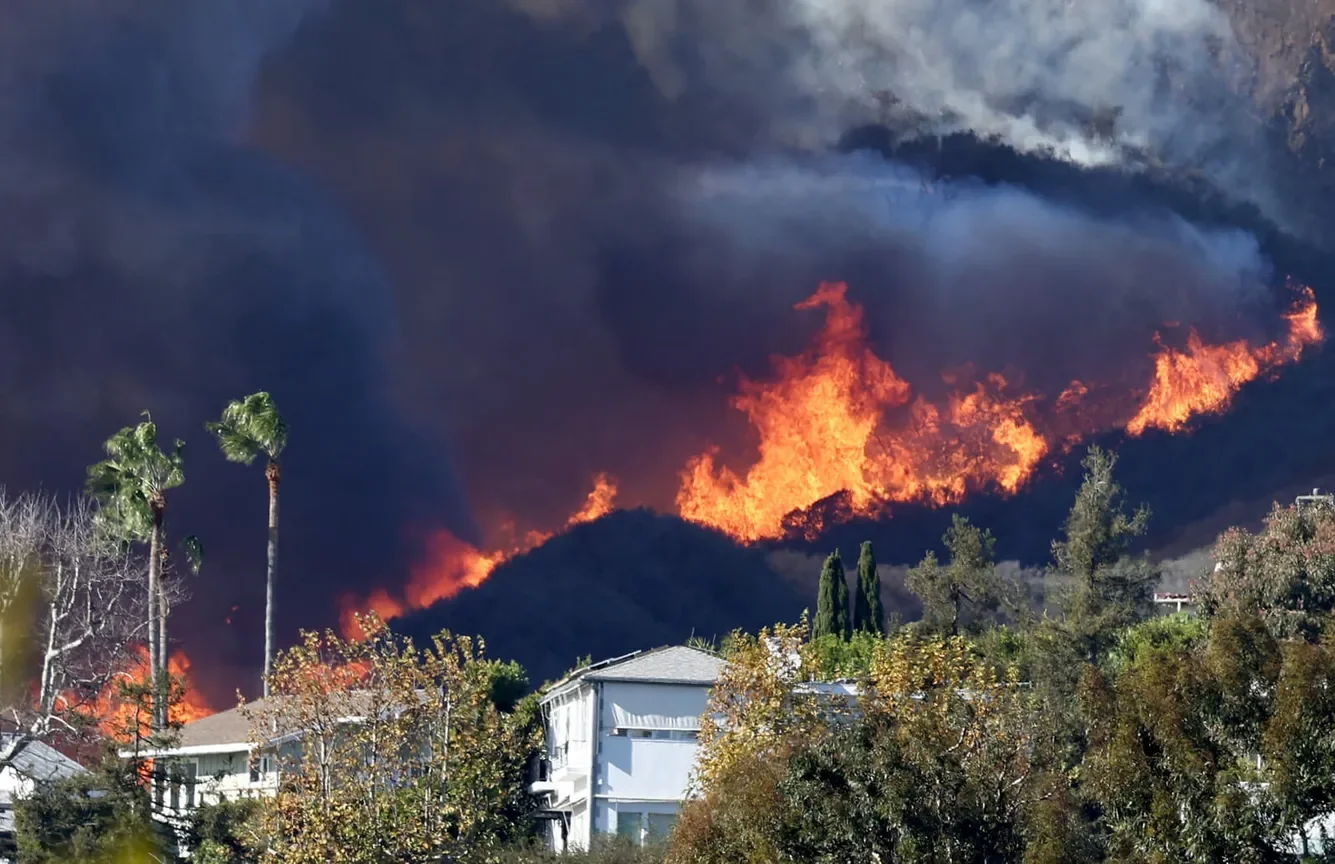
Pacific Palisades, January 7, 2025
Mario Tama / Getty Images / AFP / Scanpix / LETA
How are Fires Affecting Hollywood?
The fires are a danger to the Walk of Fame and the Hollywood Bowl concert hall.
Because of the fires in Los Angeles, social events and film industry projects have been cancelled.
The announcement of Oscar nominees was postponed for two days. The awards ceremony will take place on 2 March.
The Critic Choice Awards and the U.S. Screen Actors Guild Awards scheduled for 2025 have also been cancelled or postponed.
The premieres of “The Wolf Man,” “Showgirl” and ‘Being Better: The Robbie Williams Story’ have been cancelled.
The Villa Getty Museum, which specialises in ancient culture, is under threat. The museum's collection has not yet been damaged.
The fire service has revoked permits for filming in Altadena, La Cañada Flintridge, Pasadena and other areas. Amazon has suspended work on the second season of the Fallout series due to deteriorating air quality. NBCUniversal has halted production on the TV series Tricks, Third Man Extra and Grey's Anatomy.
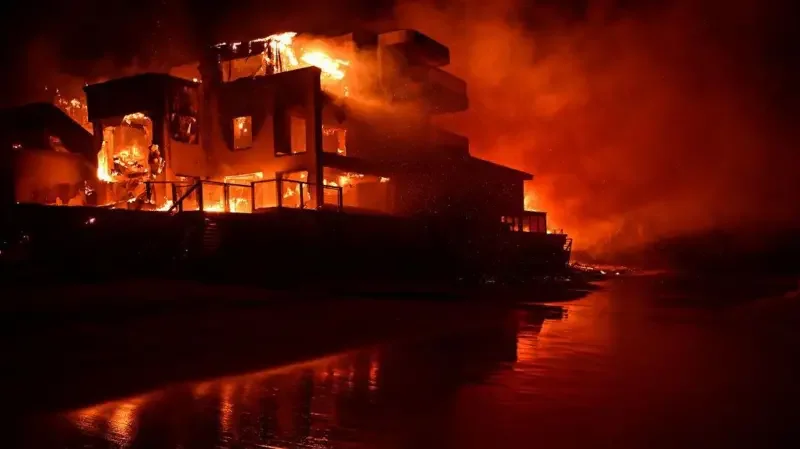
A burning mansion in Malibu / Getty Images
History's Most Destructive Forest Fires
Let's talk about the most destructive wildfires in world history.
-
The Great Chicago Fire of 1871
One of the most famous wildfires in history, the Great Fire of 1871, struck the American city of Chicago, Illinois. Between October 8 and October 10, the fire claimed nearly 300 lives and left more than 100,000 people homeless. It destroyed more than 2,000 acres of land and about 17,000 buildings. At the time, the fire spread quickly due to dry weather, strong winds, and an abundance of wooden buildings around.

Image source: Wikipedia
- Peshtigo Fire (Wisconsin, USA, 1871)
The Peshtigo Fire, which occurred at the same time as the Great Chicago Fire, is often overshadowed, but it was no less catastrophic. It swept through the town of Peshtigo and its environs on October 8, 1871, killing between 1,500 and 2,500 people and destroying some 500,000 hectares of forest.
- The Great Hinckley Fire (Minnesota, USA, 1894)
The Great Hinckley Fire covered 810 square kilometers of area, including the town of Hinckley itself, in September 1894. The fire killed an estimated 418 people and destroyed a vast amount of settlement and pine forests.
- The Black Saturday bushfires in Australia (2009)
In February 2009, Australia experienced one of the deadliest series of fires in modern history. The Black Saturday forest fires ravaged the state of Victoria, killing 173 people, destroying about 450,000 hectares of forest, and destroying more than 2,000 homes.
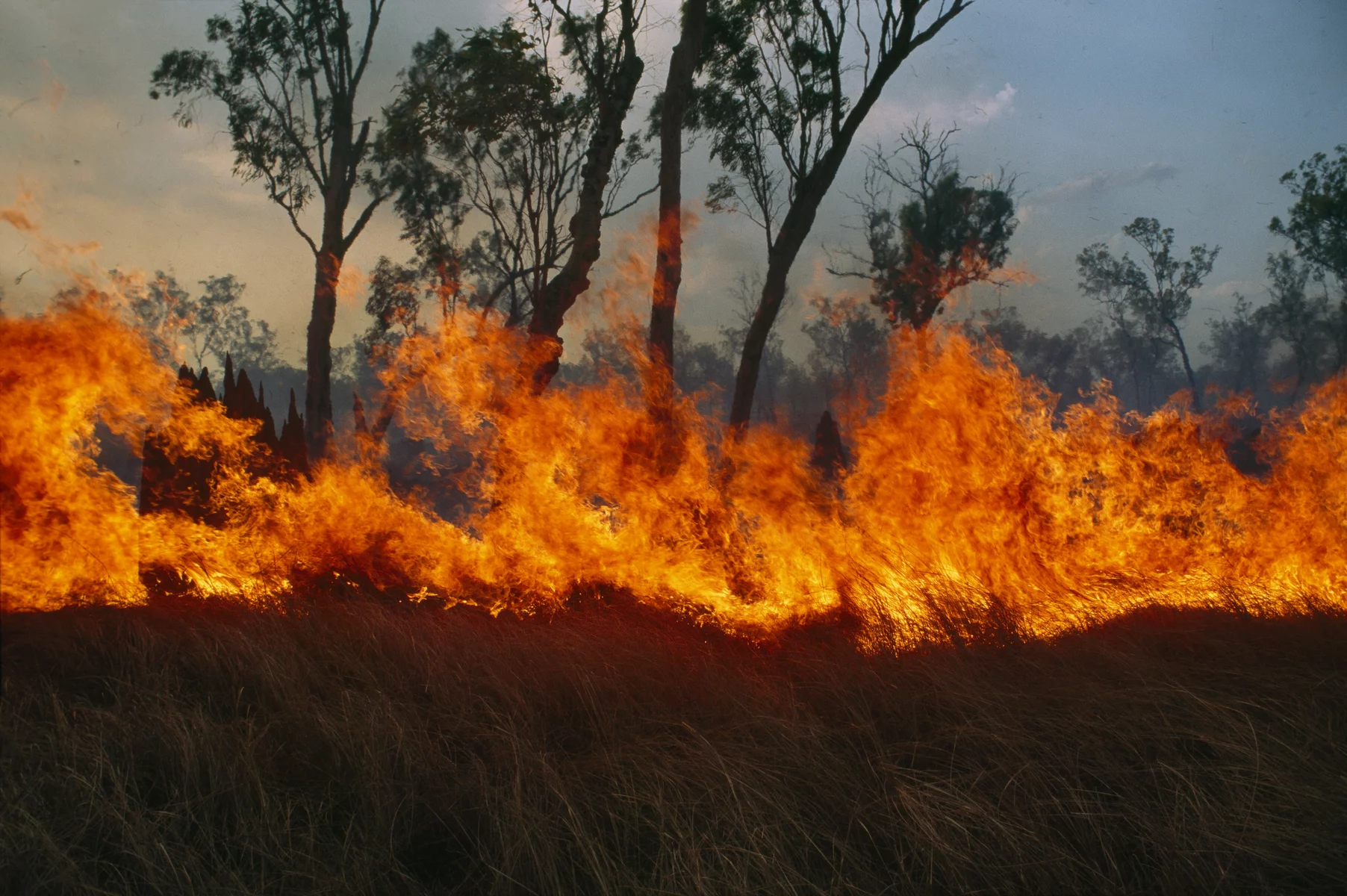
Image source: National Geographic Society
- Black Forest Fire (Colorado, USA, 2013)
In June 2013, the Black Forest Fire devastated El Paso County, Colorado, causing significant damage and loss of life. The fire burned more than 14,000 acres and destroyed more than 500 homes.

Image source: KDVR
Where are Wildfires Most Likely to Occur?
Locations with specific climatic and natural conditions have the highest risk of forest fires. Let's list them:
- Western United States
Western US states such as California, Oregon, Washington, and parts of Nevada and Arizona are known for their wildfire-prone landscapes. In these areas, a combination of factors such as hot and dry climates, extensive forests, and periodic droughts contribute to the occurrence of wildfires.
- Australia
Australia is one of the most fire-prone continents in the world, with wildfires occurring annually, especially during the summer months. The country's unique flora, including eucalyptus trees, contains flammable oils, increasing the risk of intense and rapidly spreading fires.
- Mediterranean region
The Mediterranean basin, which includes countries such as Spain, Portugal, Italy, Greece, and parts of North Africa, is often faced with wildfires. Hot and dry summers combined with strong winds create “ideal” conditions for the rapid spread of wildfires.
- Southern Europe
In addition to the Mediterranean, other parts of Southern Europe, including France, Croatia, and Turkey, are also prone to wildfires due to similar climatic conditions and vegetation patterns.
- Sub-Saharan Africa
Many countries in sub-Saharan Africa, including South Africa, Zambia, Zimbabwe, Mozambique, and Zimbabwe, frequently experience wildfires, especially in savannas and grasslands. These fires are often caused by both natural factors such as lightning and human activities such as slash-and-burn agriculture.
- Southeast Asia
Southeast Asian countries such as Indonesia, Malaysia, and Thailand experience wildfires, especially during the dry season.
- Siberia and Northern Canada
The forests of Siberia and Northern Canada are also prone to forest fires, especially during hot and dry periods.
What to Do if You are Near a Wildfire
If you find yourself near a wildfire, it is important to take immediate action to ensure your safety:
- Evacuate. If authorities have issued an evacuation order, follow it without delay. Move to safety as directed, preferably to designated centers or shelters away from the path of the fire.
- Protective clothing. If possible, wear protective clothing (long-sleeved shirts, long pants, and sturdy boots are appropriate) to protect yourself from smoke and embers.
- Drink water. It is advisable to have an adequate supply of water with you to prevent dehydration due to the intense heat and smoke exposure.
- Remain calm. Panic can cloud your judgment. Follow the instructions of the rescuers and trust their experience.
If you are directly in the area of a forest fire:
- Determine the direction of wind and fire spread and exit the danger zone only along the fire front (i.e., never overtake the fire);
- Bend down to the ground and breathe through a wet handkerchief or wet clothes.
- If possible, go to an area free of trees (e.g., a road, riverbank, or body of water).
- After leaving the fire area, report the location and nature of the fire to the fire brigade.
Author
I am responsible for editorial work. I write expert interviews and guides.













